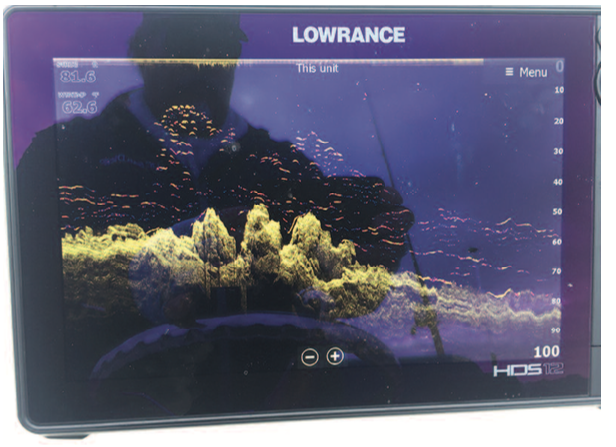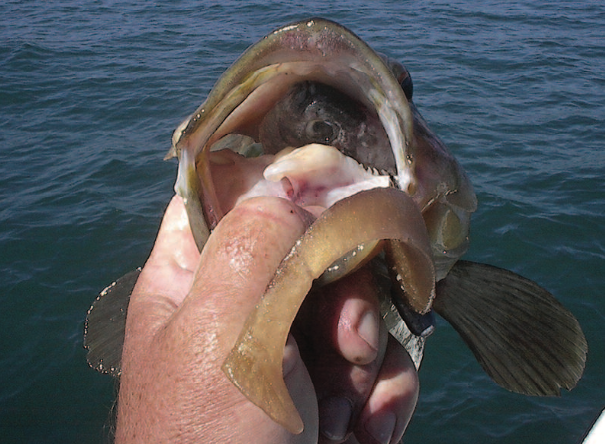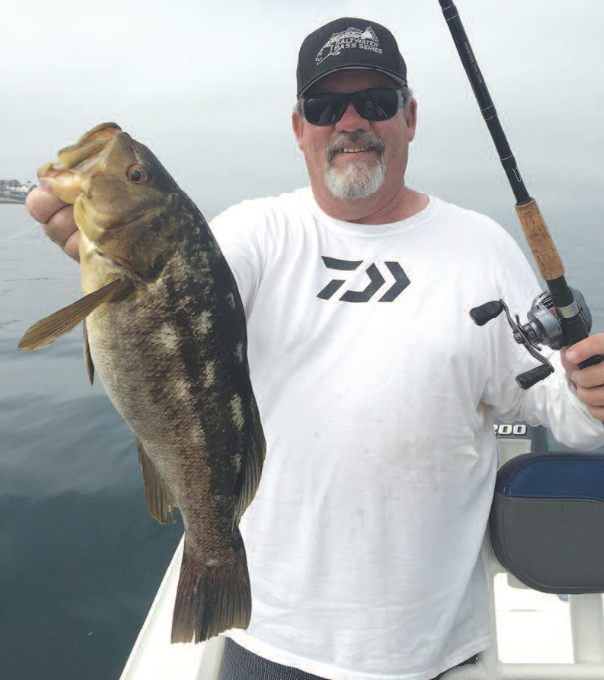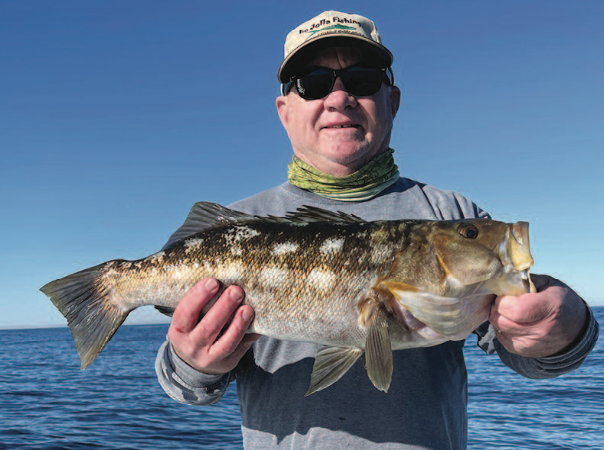BY CAPTAIN BILL SCHAEFER
SAN DIEGO — As we head into winter, I for one, start to fish a little deeper for the saltwater sand bass and calicos off Southern California. Yes, you can always score some bass in the kelp, but as the waters off southern California cool, the bulk of the fish are off in deeper water on man-made artificial or natural structure.
A lot of food is located in this deeper water and easy pickings for the bass. All it takes is bundling up a tad more and braving the cold of winter to fish.
So, the day before I wrote this, I ventured out to the ocean to see if the salty bass would play. The most important part of this type of fishing is a fish-finder. Yes, you could drift all around, but the fish-finder is a way of finding your targets.
I run a Lowrance HDS LIVE 12 with amazing resolution, but many lower-priced units have just as nice resolution nowadays along with down scan and side scan sonar. This helps find even the smallest rock piles or breaks in the contour of the bottom.

Looking around with a fish finder is always rewarding. Start at the edge of the kelp and zig zag out to deeper water. You never know when you will find a rock pile or a sunken boat or gosh knows what. Even just natural contours in the bottom will hold bass. The drop-offs especially will hold bass but will they be on the top of the drop-off or on the bottom? That’s where the fish finder helps you out.
Up and down the coast of southern California are targets you need to learn for fishing deep. You may even discover a new one no one knew about. Artificial reefs made of old pier pilings, concrete, boulders the size of Volkswagen bugs, outlet pipes, sunken ships, as well as natural contours on the bottom.
All of these will hold December bass into the rest of the winter months. I just want to remind you that on some of the artificial reefs made from old bridges or concrete there can be rebar sticking out of the various materials. You may want to go with a form of weedless jighead or bait to help keep yourself from retying on one new bait after another. Weedless swimbaits can be used in deeper water if weighted with lead nails along with the normal weight on the hook.
So, we were out there looking around and I found a large cloud of bass hanging just off a natural drop-off that went from 80 to 110 feet of water. You will learn to recognize schools of fish and bait just by using your unit. Calicos tend to look like the most classic marks we’ve all seen; upside-down horseshoes.
If you see a ball of bait with streaks running all around and through it, then it can be bass feeding. You have to stop and try a few drops. So, this first mark I found looked right, but we couldn’t get a bite after a few drops, so we moved on. Never give up though. They may not be feeding, so find the area where the bait is and the fish are more active.
We traveled a few hundred yards south to another rock pile I had marked recently. Now this is a great reason to have mapping on your fish-finding unit. This is your advantage to mark spots and return to them later on or year after year. The bait was there and the bass were feeding as the streaks showed on my meter. We had numerous fish over the rails quickly and I had the big one that got away, but that’s another story. But, seeing the bass on the meter enhances your confidence and the excitement of catching.
So, now that you found the fish, how do you catch them? The first thing to realize is where the bass are located in the water column. If they are up off the bottom feeding on a ball of bait- fish then you don’t want to throw a 2-ounce jighead with a swimbait. It will rocket right past them and they’ll never even see it.
You do have to take wind and current into account, but you don’t want to use any more weight than you have to. You want that bait to swim slowly by them on the way down. Then you can retrieve it at different speeds to see if they want it swimming slower or faster. This technique will work no matter where they are depth-wise.

For your tackle for this deep-water bass fishing, the tackle you use for the kelp bed area fishing will work. I, for example, use a Daiwa DXSB casting rod and Lexa reel with Braid or Maxima 15- to 20-pound Ultragreen mono. Jig heads will vary in weight as I mentioned. Some like the braid because it lets you feel those deep water bites easier. You can also use spinning gear if you like it.
It is also better when you are being blown around a lot by the wind. Line drops off a spinning rod and reel easier, so it will sink to your spot instead of wanting to swing in towards the boat. Those of you, who like me, have a trolling motor like my Motorguide Xi3 can anchor in place over a spot with the GPS anchoring feature.
Swimbaits can be found in many sizes and colors. All the companies make a tail that vibrates the way they like it best. That’s why I preach to carry many different brands with you. Haven’t you had a friend just looping the bass when you aren’t catching anything, even though you are using the same color in a different brand? It’s because the brand he’s using has a better vibration that the bass are keying in on.
So, MC Swimbaits, Big Hammer, Reyes Swimbaits, Western Plastics or Big Pancho baits all have different sizes and shapes, so you want to carry a lot of different ones. Colors are for experimenting, so try your favorites out and you might come across a new hot color.
As I mentioned, jigheads size can matter a lot. I usually use a 1-ounce jighead, it just seems to fall at the right rate most of the time. Sometimes I go up to 1.5-ounce jighead if the wind is blowing us along too fast, so I can stay down in the fish zone. Sometimes if the bass are feeding on red crab for instance, then I go to a 1⁄2- or 3⁄4- ounce jighead so the bait drifts with the current more like a red crab does.
When you bring a fish up they will usually spit up what they have been eating. Red crab, various shrimp, octopus, squid, mackerel, sardine or anchovy, are all favorites of the salty bass. Keep an eye out, it just may tell you what color or type bait to throw. We had the fish spitting up crab, so we went with that and a lighter head, so our baits just fluttered down slowly like a red crab drifting with the tides. We had a great day on the water and so can you. Give it a try and you’ll be fishing salty bass year-round.




